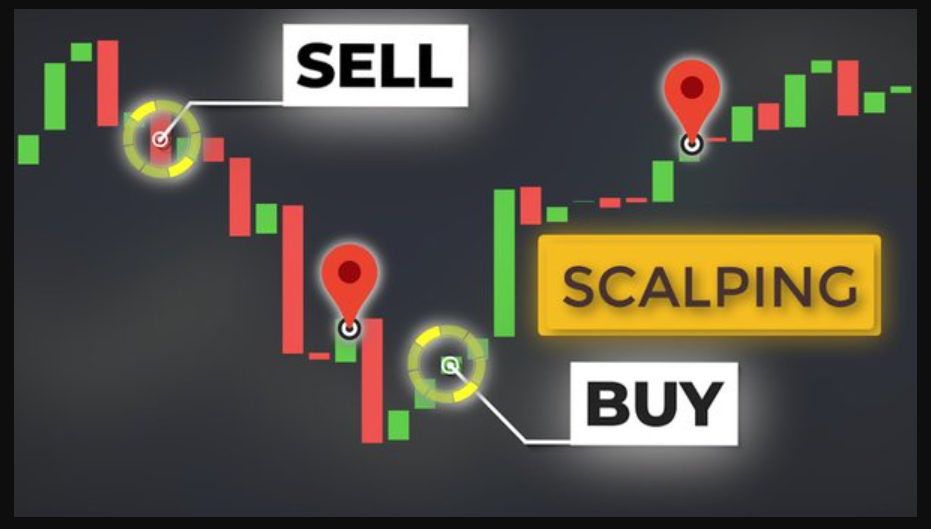In today’s financial markets, trading has become increasingly popular as a means to generate income and achieve financial independence. With advancements in technology and more accessible platforms, individuals now have the opportunity to become funded traders and potentially earn substantial profits. However, achieving consistent success in trading requires more than just luck or intuition. It demands a deep understanding of the markets, effective strategies, and disciplined execution. In this article, we will explore the key components to mastering profitable trading strategies and how you can become a funded trader.
Table of Contents
Understanding the Basics of Trading
Before diving into the world of trading, it is crucial to grasp the fundamental concepts and principles. Financial education plays a vital role in setting the foundation for success. Understanding the various financial markets, such as stocks, bonds, commodities, and foreign exchange, is essential to identify potential opportunities and manage risk effectively.
When it comes to stocks, traders need to understand the different types of stocks available, including common stocks and preferred stocks. It is also important to learn about stock indices, such as the S&P 500 or the Dow Jones Industrial Average, which represent the performance of a group of stocks.
In the bond market, traders should familiarize themselves with the different types of bonds, such as government bonds, corporate bonds, and municipal bonds. Understanding how interest rates affect bond prices is also crucial, as bond prices move inversely to interest rates.
Commodities, such as gold, oil, or agricultural products, are another important asset class to consider. Traders need to understand the factors that drive commodity prices, such as supply and demand dynamics, geopolitical events, and weather conditions.
Moreover, gaining knowledge about foreign exchange markets is essential for traders interested in currency trading. Understanding currency pairs, exchange rates, and the factors influencing currency movements, such as economic indicators or central bank policies, is crucial for successful forex trading.
Once you have a solid understanding of the different financial markets, it is advisable to invest time in learning about different asset classes, market participants, and economic indicators that can impact prices. For example, understanding the role of institutional investors, such as mutual funds or hedge funds, can provide insights into market trends and potential trading opportunities.
To excel in trading, you need to be familiar with key trading terms and concepts. This includes understanding the difference between long and short positions, leverage, margin, and order types. Building knowledge in these areas will help you navigate the markets with confidence and make informed trading decisions.
Long positions refer to buying an asset with the expectation that its price will rise, allowing you to sell it at a higher price in the future. On the other hand, short positions involve selling an asset that you don’t own, with the expectation that its price will decrease. In this case, you can buy it back at a lower price to make a profit.
Leverage is a tool that allows traders to control a larger position with a smaller amount of capital. It amplifies both potential profits and losses, so it is important to use leverage wisely and understand the associated risks.
Margin refers to the portion of the total value of a trade that traders need to deposit in their trading account as collateral. It allows traders to increase their trading position beyond their available funds. However, margin trading involves higher risks, as losses can exceed the initial investment.
Understanding different order types, such as market orders, limit orders, stop orders, and trailing stop orders, is crucial for executing trades effectively. Each order type has its own characteristics and is suitable for different trading strategies.
By expanding your knowledge in these areas, you will be able to develop a solid foundation in trading and increase your chances of success in the financial markets.
Developing Your Trading Strategy
Once you have a solid understanding of the basics, it is time to develop your trading strategy. This involves choosing between fundamental analysis and technical analysis or combining both to maximize your chances of success.
Fundamental analysis focuses on analyzing financial statements, economic data, and news events to identify undervalued or overvalued assets. It aims to determine the intrinsic value of an asset and make trading decisions based on its perceived worth.
On the other hand, technical analysis utilizes charts, patterns, and indicators to study price movements and predict future price direction. Traders employing this strategy focus on historical price data rather than fundamental factors. Technical analysis can help identify trends, support and resistance levels, and potential entry and exit points.
Regardless of the trading strategy you choose, risk management is a critical aspect of successful trading. Establishing risk parameters, such as stop-loss orders and position sizes, will help protect your capital from excessive losses and ensure longevity in the trading business.
Furthermore, understanding the role of psychology in trading is essential. Emotions can significantly impact decision-making, leading to impulsive actions and poor judgment. Maintaining discipline, emotional control, and a patient mindset are crucial elements to succeed as a trader.
Profitable Trading Strategies
Now that we have covered the basics of trading and the development of a trading strategy, let’s explore a few profitable strategies commonly used by traders.
Trend Following Strategy
Trend following is a popular strategy that aims to capture price movements in the direction of a prevailing trend. Traders using this strategy analyze price charts to identify upward or downward trends and enter trades accordingly. The strategy relies on the belief that trends persist over time, providing opportunities to profit from the momentum.
Swing Trading Strategy
Swing trading involves taking advantage of short-term price movements within a larger trend. Traders using this strategy seek to identify patterns and price swings that occur over a few days to a few weeks. They aim to enter trades at key support or resistance levels, capitalizing on anticipated price reversals.
Scalping Strategy
Scalping is a high-frequency trading strategy that involves entering and exiting trades quickly, typically within minutes. Traders using this strategy focus on capturing small price movements and profiting from numerous trades throughout the day. Scalping requires precision, discipline, and an ability to react swiftly to market conditions.
Steps to Becoming a Funded Trader
Now that you are familiar with profitable trading strategies, let’s discuss the steps involved in becoming a funded trader.
Building a Track Record
Before seeking funding, it is crucial to build a track record that demonstrates your proficiency as a trader. Focus on following your chosen trading strategy diligently and maintaining a consistent approach. Keep a detailed record of your trades, highlighting your profitability, risk management techniques, and overall performance. A strong track record will increase your credibility and improve your chances of obtaining trading funding.
Applying for Trading Funding
There are various trading firms, hedge funds, and proprietary trading companies that offer funding opportunities to talented traders. Research and identify reputable firms that align with your trading style and goals. Prepare a comprehensive application that includes your track record, trading plan, and goals. Highlight your strengths and outline how you can add value to the firm. Remember, competition is fierce, so it is important to present yourself in the best possible light.
Maintaining Consistency and Discipline
Once you have secured trading funding, the journey has just begun. It is essential to maintain consistency in following your trading plan and strategies. Stick to your risk management principles and avoid succumbing to emotional decision-making. Treat trading as a business, and always strive for continuous improvement.
In conclusion, mastering profitable trading strategies requires a combination of financial education, a well-defined trading strategy, effective risk management, and disciplined execution. By understanding the basics of trading, developing your unique trading strategy, and following the steps to become a funded trader, you can increase your chances of achieving consistent success in the exciting world of trading.











